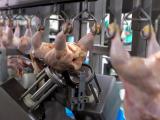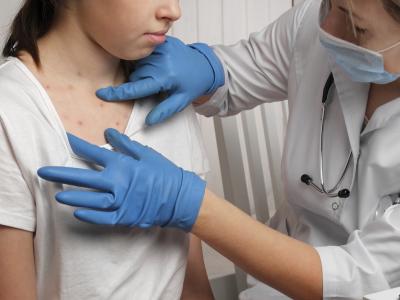Mar 13, 2008 (CIDRAP News) An investigation by acongressional oversight committee into the US Food and Drug Administration's(FDA's) inspection of fresh spinach revealed lax enforcement at facilities thathad violations.
The 10-page report, released yesterday, was requested by theUS House of Representatives Committee on Oversight and Government Reform in thewake of a 2006 Escherichia coli O157:H7outbreak linked to fresh spinach. The outbreak was traced to contaminated spinach from California's Salinas Valley andinvolved 204 cases and 3 deaths in 26 states and one Canadian province.
According to the report, thefindings are based on the FDA's inspection records of all firms that producedpackaged fresh spinach from 2001 to 2007. One of the key findings was thatfresh spinach facilities were inspected only once every 2.4 years, less thanhalf of the FDA's goals. The report states that the FDA's goal is to inspect95% of high-risk facilities, such as those that produce packaged spinach, atleast once a year. However, for the investigation period, the FDA provided 199inspection reports for 67 facilities.
The report said the FDA observed"objectionable conditions" during 47% (93) of the 199 inspections. Themost common ones involved plant sanitation, plant construction, and workersanitation. For example, more than 60% of the inspections that recordedobjectionable conditions documented facility sanitation problems, includinginadequate restroom cleanliness or litter accumulation. Other problems includedwater condensation inside some of the plants that could contaminate spinachwith waterborne pathogens.
When FDA investigators foundobjectionable conditions, investigators found they took no"meaningful" enforcement action and overlooked repeat violations,even at multiple facilities operated by Natural Selection Foods, the firm thatwas linked to the 2006 E coli O157:H7outbreak.
FDA inspectors were more likely torequest voluntary compliance of violators, rather than take enforcement actionssuch as warning letters, seizures, or injunctions.
Some of the findings suggest thatin some instances the FDA lacks the authority to do its job. On eightoccasions, facilities barred FDA inspections from fully reviewing their foodsafety practices. Current laws don't empower the FDA to compel firms to producerecords. "On one occasion, inspectors were denied access to writtenrecords by the facility that was the site of the 2006 outbreak," theauthors wrote.
The scope of FDA inspectionsappears to be too narrow to identify the sources of an E coli outbreak, the investigators found. For example, in the2006 spinach outbreak California and FDA officials determined that the outbreakwas probably caused by contamination, such as cattle or wild-pig feces ortainted water, in spinach-growing areas.
The FDA does not routinely inspectfields except in outbreak investigations, the report stated, adding that noneof the 199 inspection reports mentioned field condition observations.
"The inspection reportsprovided to the committee raise serious questions about the ability of the FDAto protect the safety of fresh spinach and other fresh produce," theinvestigators wrote.
Inadequate funding and resourcesfor the FDA's food safety activities may be hampering the agency's ability toprotect the safety of fresh spinach, the report says.
In December 2007, the FDA'sscience board, an independent advisory committee, issued a report that theFDA's ability to conduct routine inspections and perform its enforcement andregulatory duties has "severely eroded" and couldn't be fixed withits current resources.
FDA spokeswoman Kimberly Rawlingssaid that the agency is seeking legislative authority to launch a foodprotection plan that targets some produce and foods that have been connected torecent outbreaks, according to a Washington Post story today.
Despite the recent foodcontamination episodes, the United States still has one of the safest foodsupplies in the world, including its fresh produce, she told the Post.
See also:
Dec 5, 2007, CIDRAP News story "Reportsays stingy funding has put FDA in crisis"
Mar 23, 2007, CIDRAP News story "FDAreleases final report on spinach E colioutbreak"

















